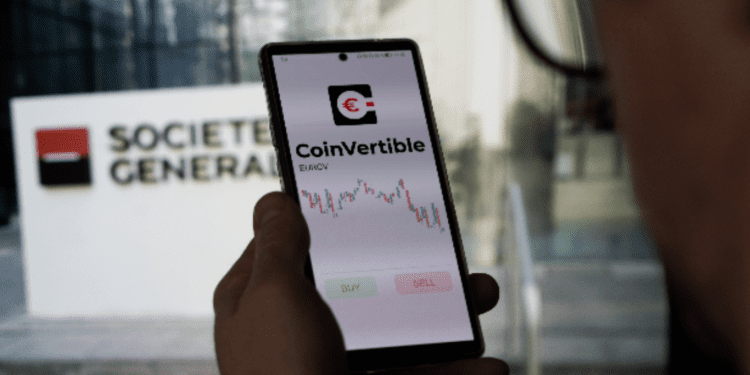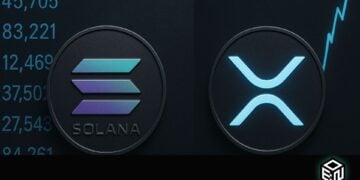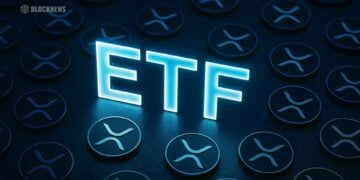- Societe Generale’s Forge launches euro stablecoin CoinVertible on Ethereum, aiming to bridge traditional capital markets and the digital assets ecosystem.
- CoinVertible is designed for robust on-chain transactions, on-chain liquidity, and intra-day liquidity needs, based on the CAST framework.
- The launch coincides with the upcoming EU Markets in Crypto Assets (MiCA) regulation, which will supervise the crypto sector and regulate stablecoin issuance.
Societe Generale’s crypto subsidiary, Forge, has recently launched a new euro stablecoin called CoinVertible on the Ethereum blockchain. This groundbreaking development bridges the gap between traditional capital markets and digital assets.
CoinVertible: Bridging the Gap Between Traditional and Digital Finance
CoinVertible is designed to offer “robust” settlement options for on-chain transactions, on-chain liquidity, and a solution for intra-day liquidity needs, such as margin calls. The token is based on the Compliant Architecture for Security Tokens (CAST) framework, which works with financial institutions to offer digital assets, over-the-counter (OTC) trading, and post-trade settlement. Jean-Marc Stenger, CEO at Forge, stated that stablecoins will be a “key element to increase trust and confidence in the native crypto ecosystem.”
The euro stablecoin is expected to be listed on exchanges and third-party platforms in the coming months. However, it is essential to note that the euro stablecoin market still needs to catch up to US dollar stablecoins on Ethereum. US dollar stablecoins make up 99.37% of the total stablecoin supply on Ethereum, and the euro stablecoin supply has decreased from $665 million to $591 million over the past year.
The launch of CoinVertible comes just as the European Union is about to pass the Markets in Crypto Assets (MiCA) regulation. The regulation outlines rules for licensing firms offering crypto services in the EU and regulates stablecoin issuance. MiCA is one of the first EU regimes to supervise the crypto sector and is expected to see a final vote in the European Parliament today.
Centralization Criticism and Institutional Focus
While introducing CoinVertible is a significant step in connecting traditional finance and the digital assets ecosystem, it has faced criticism for its centralized nature. The smart contract code for EUR CoinVertible (EURCV) requires ERC-20 transfers to be approved by a centralized registrar, presumably controlled by the bank before the transaction is processed.
However, it’s important to note that EURCV is designed primarily for institutional clients and not for public use. The bank must onboard institutional clients through Know Your Customer (KYC) and Anti-Money Laundering (AML) procedures before gaining access to the stablecoin.
Societe Generale’s Forge has taken a bold step in launching the CoinVertible euro stablecoin on the Ethereum blockchain. Despite some centralization criticism, the development marks a crucial milestone in bridging traditional finance and the digital asset space. As EU regulators work towards implementing the MiCA regulation and other banks explore the stablecoin market, the future of digital assets and traditional finance integration looks promising.














